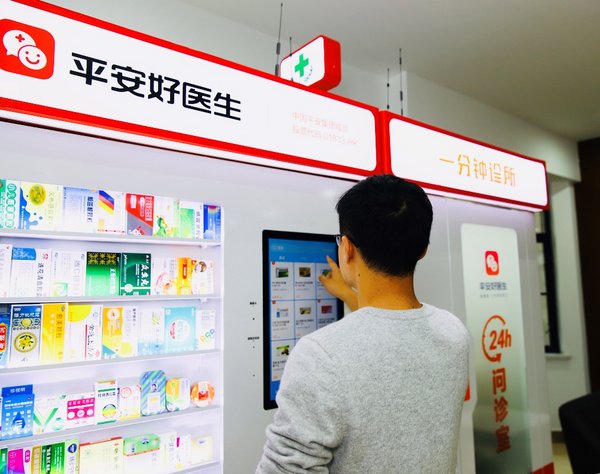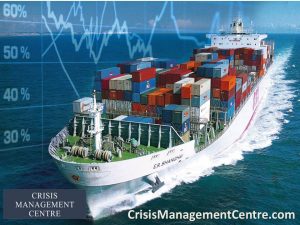
Jessica Tan, Co-CEO of Ping An Insurance (Group) Company of China, Ltd. (hereafter “Ping An” or the “Group”, HKEx:2318; SSE:601318), spoke at the 2020 MIT Platform Strategy Summit on how technology has advanced health care services amid the COVID-19 pandemic. She also highlighted the Group’s recent health care technology breakthroughs.
“What struck us during COVID-19 is how much potential technology has to improve the accessibility, efficiency, effectiveness and affordability of health care,” Jessica said.
Health care is an integral part of Ping An’s “finance + ecosystem” strategy. The strategy is to use technology to empower five ecosystems: financial services, health care, auto services, real estate services and smart city services. These ecosystems help the Group extend its reach to internet users beyond its core financial businesses. At the end of 2019, Ping An had more than 200 million retail customers and nearly 516 million internet users.
“Ecosystems require a merger of online and offline services and this is our competency,” Jessica said. In the health care ecosystem, Ping An has built a comprehensive model to serve online and offline patients, providers and payers through Group subsidiaries and affiliates, including Ping An Good Doctor, Ping An HealthKonnect and Ping An Smart Healthcare, which is a part of Ping An Smart City.
For patients, Ping An Good Doctor provides end-to-end service, including 24/7 online consultations, prescriptions, referrals, appointments, second medical opinions and drug deliveries – supported by the in-house full-time medical team and proprietary artificial intelligence (AI)-based medical system. In 2019, Ping An Good Doctor became China’s largest online health care services platform, with more than 315 million registered users, 729,000 daily consultations on average, and a professional network of more than 3,000 hospitals and 94,000 pharmacies. Between 22 January to 6 February as the COVID-19 outbreak peaked in China, the number of new registered users increased by 10 times compared with the period from 1 to 21 January. The average number of daily online consultations grew nine times over the same period.
For medical service providers, Ping An Smart Healthcare provides a digital platform to support all the steps before, during and after medical service delivery. Ping An launched its COVID-19 smart image-reading system in early 2020 to assist doctors with fast and accurate diagnoses to help control the epidemic. The system can generate smart analysis results in about 15 seconds, with an accuracy rate above 90%. AskBob Doctor, an AI-based diagnosis and treatment assistant tool, has been used 33 million times by 430,000 doctors for medical decision support, patient follow-up and patient education since its launch in June 2019. As of July 2020, Ping An Smart Healthcare supported a network of nearly 17,000 medical institutions across 90 cities in China.
For payers, such as social health insurers, Ping An HealthKonnect uses advanced algorithms and technologies to build anti-fraud and health care resource optimization models to reduce overtreatment, fraud and abuse. HealthKonnect also offers small- to medium-sized insurers smart risk management services. As of the end of 2019, Ping An HealthKonnect provided services for over 800 million people in more than 200 cities.
In her speech, Jessica described the difference between Ping An from other high profile technology giants, saying: “Most internet companies started off as consumer internet businesses and grew their ecosystem centered around their own consumers. We started off as a financial services company and used technology to empower five ecosystems. We see ourselves as an enabler so our ecosystems are more open.”
“Our philosophy is very different,” she added. “We not only built our own flagship where we became the largest online health care provider, but we also care about the other health care institutions and commit to using our experience, knowledge as well as technology to enable them to do better.”
During the outbreak of the coronavirus, Ping An Health Technology Research Institute helped more than 30 cities in China to analyze and predict the trend of cases to help with local control measures. The forecasts achieved a 99% accuracy rate for predictions one day in advance and 98% accuracy seven days in advance.
Looking ahead to 2021, Jessica said: “We remain cautiously optimistic that we will recover and be in a stronger position. China, relative to the rest of Asia, has gone through the virus a bit earlier and it has resumed business as much as possible. COVID-19 has spurred the adoption of online health care services by customers, businesses and regulators because they saw the necessity of doing so, and that has spurred us to provide better digital health care services to our clients.”

SOURCE Ping An Insurance (Group) Company of China, Ltd.

